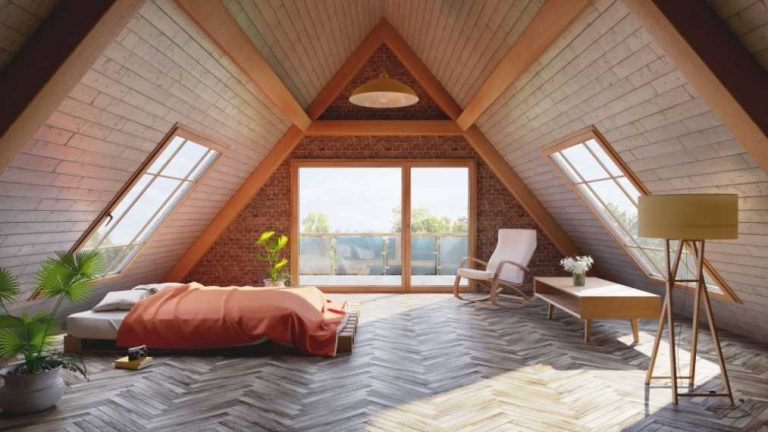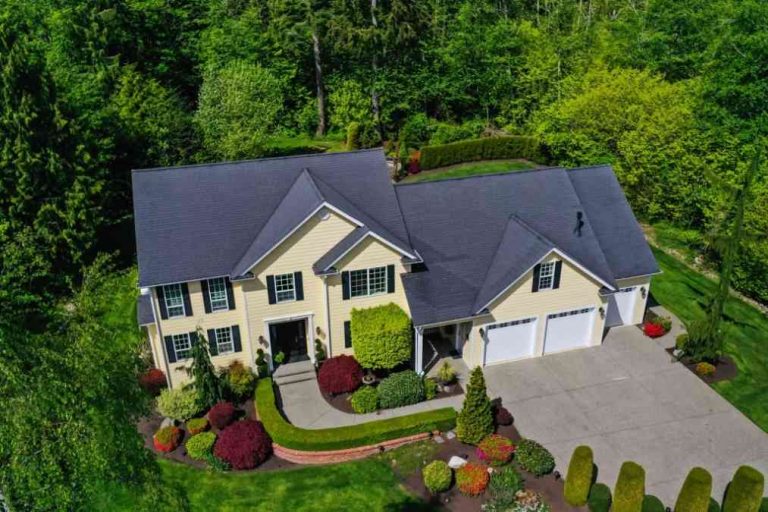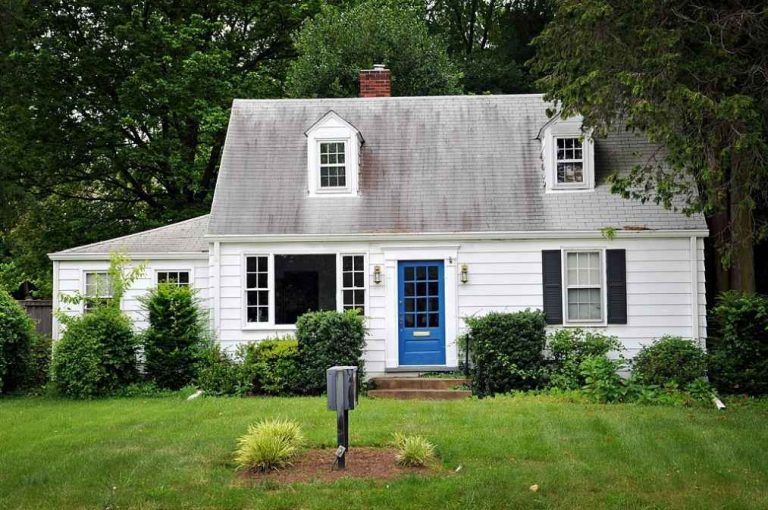You’ll often observe that some roofs appear nicer when compared to other roofs. Moreover, you even observe that some roofs are more durable than others.
But, what’s the reason for this?
Well, roofs that have underlayment in them perform better than other roofs. This is mainly because an underlayment works as a protective layer for the roof. Hence, the underlayment protects the roofs and the roofing materials on it.
And, is cedar siding underlayment necessary?

Yes, any type of underlayment for siding is necessary for the roofs. But, how do you install cedar siding in your roof? Well, don’t worry, we’re here for you.
As a matter of fact, we’ve built this article as a complete guide on cedar underlayment. We’ll also show you the installation process as well. Furthermore, you’ll find all the benefits and features of cedar siding.
Got a little time to check out our article? Let’s go
Why Do You Need Cedar Siding Underlayment?
Many people don’t actually install an underlayment in their roofs. But, is siding underlayment necessary for roofs?
Well, yes roof underlayment has a lot of benefits. Let’s take a look at some of them:
1. Better Appearance of the Roofs
Yes, you heard me right. At times, you’ll observe that some of the roofs have a better appearance than others.
Here, a better appearance is the rich colors and the shine on the roofs. The cedar siding underlayment ensures the natural color and smoothness of the roofs.
Moreover, the owner who has used this on their roofs have told me that the color and shine lasts long. So, your roofs will appear better than any other one in the neighborhood.
2. Natural Resistance
Who doesn’t love durability? People go all out to ensure that they’re roofs are safe from the rain and excess heat. Moreover, many people even paint their roofs so that they don’t feel hot when summer comes.
Well, if you’re using cedar siding underlayment, it’ll protect your roofs from water and heat. Moreover, it’ll even make sure that your roofs are protected from storms and cyclones.
On the other hand, they even protect from insects as well. At times, many insects attack roofs and houses. But, if you have cedar siding underlayment, it’ll protect the unique roofing materials.
3. Making Woods Last Long
Yes, you heard me right. The cedar fibers have a compound named “thujaplicins†in them. This compound is a natural preservative.
Due to this compound, the woods last longer than they do on other roofs. So, by having the cedar siding underlayment in your roof, the woods will last long.
4. Dimensional Stability
The cedar siding underlayment has dimensional stability. This means it’ll lie straight and flat. Also, it won’t swell, twist, and warp. So you’re ensuring the correct stability of your roofs if you have them.
5. Improved Insulation
Many roofs don’t have better insulation. As a result, people feel really hot in summer and cold in winter. Also, due to poor insulation, the roofs tend to get really hot and cold in those weathers.
But, if you have a cedar siding underlayment in your roofs, it’ll provide great insulation. Here, the improved insulation makes sure that less heat is transferred. Hence, it’ll keep the roofs cool in summer and warm in winter.
6. Acoustical Barrier
The cedar siding underlayment ensures low density on the roofs. As a result, it makes the product have a great acoustical barrier.
Also, it’s responsible for the great insulation of the roof. This low density of the cedar siding makes sure it protects your roof from the heat, noise, etc.
Features Of Cedar Siding
Till now, you’ve only seen the benefits of using this siding. Now, let’s take a look at the features of cedar siding:
- It’s easy to cut, glue, nail, and saw.
- You won’t have to install any large sheets together. Only the small pieces are installed together.
- It has various styles available.
- You’ll get a matching trim board with it.
DIY Cedar Siding
By now, you’ll know all about the benefits and features of cedar siding. Moreover, you even know how this underlayment will help the woods to last long. So, if you’re wondering how to install this in your roofs, we got you covered on.
So, let’s look at all the preparations and the step-step process of this underlayment:
Tools
Well yes, you’ll need a set of tools for the job. But, don’t worry as all of these tools are affordable and available. So, let’s take a look:
- Corner Boards (Link from Amazon)
- Hammer (Link from Amazon)
- Nails (Link from Amazon)
- Caulk (Link from Amazon)
- Measuring Tape (Link from Amazon)
- Table Saw (Link from Amazon)
- Furring Strips (Link from Amazon)
- Cedar Siding (Link from Amazon)
- Molding (Link from Amazon)
Step 1: Install the Siding on the Corners
Firstly, you’ll have to install the siding into the corners of your home. So, take the siding corner trim and secure it on the corners of the roof.
Step 2: Secure the Boards & Fill Any Joints
Following the 1st step, use the hammers and nails on the corner boards. Using the hammer, make sure that the board is secured in its place. The boards should be flush to the home before you nail them in.
After you’re done, fill in the joints so that you can seal the boards in. Here, you’ll have to use caulk to seal the joints and also fill them.
Step 3: Measure the First Side and Cut the Strips
Take the measuring tape and measure the lengths of the first side. After this, you’ll need to cut the strips. Here, make sure you’re cutting the furring strips to span the length.
Also, go according to the measurement and double-check to ensure that you don’t mess anything up.
Step 4: Attach Furring Strips & Cut the Cedar Pieces
Before cutting the cedar siding pieces, attach the furring strips to the bottom. Here, you’re attaching so that it acts as a support to the first board.
After you’re done with this, take the table saw and cut the cedar pieces. The pieces need to be cut according to the length of the roof.
Step 5: Install the 1st Piece of the Cedar Siding to the Home
Start by installing the first piece to the bottom of the home. You’ll have to overlap the strip to one inch. Make sure it doesn’t get passed 2 inches. Following this, continue going with the first piece installed.
Step 6: Continue Layering & Cut the Siding to Fit the Shape
Layer the pieces so that they are vertically installed in the home. However, make sure that you’re giving about ¼ inch of a gap. You’ll have to provide the gap in the last board.
After you’re done giving the gap. Seal it with molding. Also, if you come around any windows then cut the siding with the table saw so that it can fit. By doing this, you’ll provide good shape and it’ll look good to the eye.
Repeat the process in the same manner until you cover the whole house.
Bonus Tip
- In order for the siding to look good, don’t install the pieces in the same way as the others.
- The length of the layered pieces shouldn’t be the same as the others.
- The seams shouldn’t be positioned on top of each other.
Cedar Siding Installation Best Practices
The cedar siding is great for homes as it’ll bring character and durability. Moreover, it even makes the homes look great and provides long-lasting shine. So, we’ve introduced you to the easy DIY installation of cedar siding.
Now, let’s take a look at some of the best practices for cedar siding installation:
1. Let the Siding Breathe
You need to flex the cedar once after installing it. This is a type of material that needs flex and breathing. So, it’s highly recommended you install this material over furring strips.
If you’re installing this horizontally, the strips should be attached vertically. And, if you’re installing them vertically then attach the strips horizontally.
As a result, you’ll give them space to flex and breathe. Also, the moisture will make sure they’re not in contact with the wall at any time. The sidings absorb moisture. So, you need to provide papers to cover them up.
Also, you can use a cedar breather. This provides a continuous airflow between the roofs and the shingles. As a result, it’ll cause the cedar siding to breathe.
2. Nails for Cedar Siding
Make sure the nails are penetrating two inches into the studs and the strips. Also, use galvanized nails for this. Apart from this, use thin nails so that they don’t split the woods at the time of installation.
On the other hand, keep the nails away from one another. If they’re close to each other, they’ll stop the woods from flexing.
3. Providing Cuts to Cedar Siding
Take a normal hand saw and miter box to provide cuts into the cedar siding. But, why is it needed?
Well, cutting the ends will make sure it doesn’t get attacked by insects. Even though cedar siding is naturally resistant to insects, it can still harm it. So, it’s better if you take the precaution.
Wrapping Up
That’s all we have for you. Hopefully, you’ll now know how to install cedar siding underlayment.
Moreover, we’ve even tried to give a whole idea about this matter. In the end, we’d like to say that cedar siding is great and it’ll help your woods last long.
So, why don’t you try this by yourself? Good Luck.






